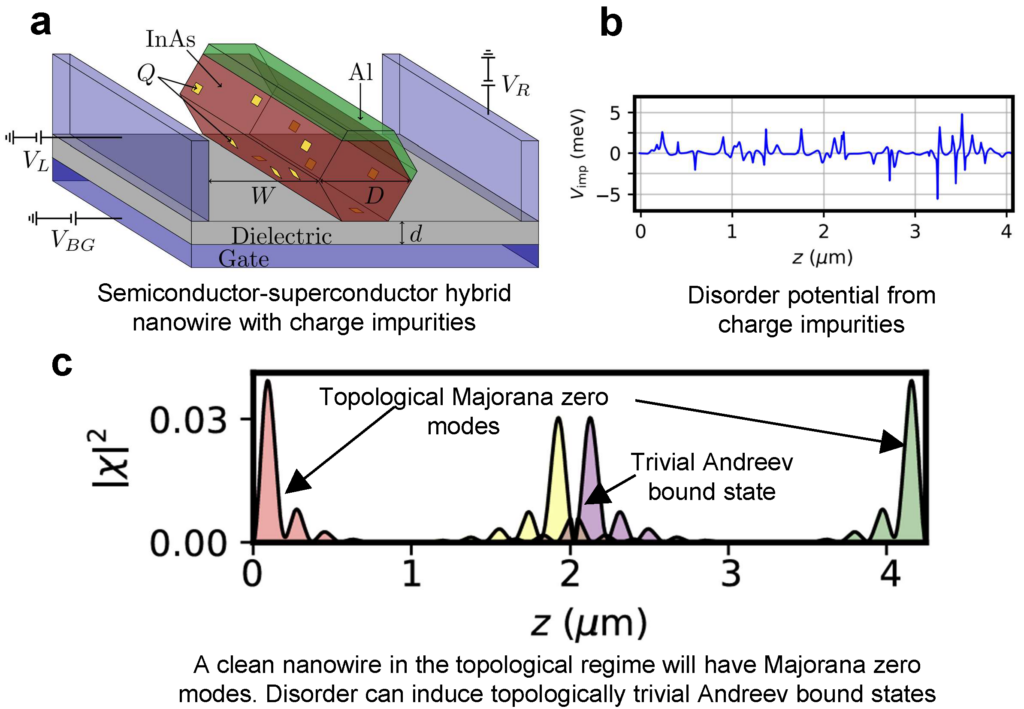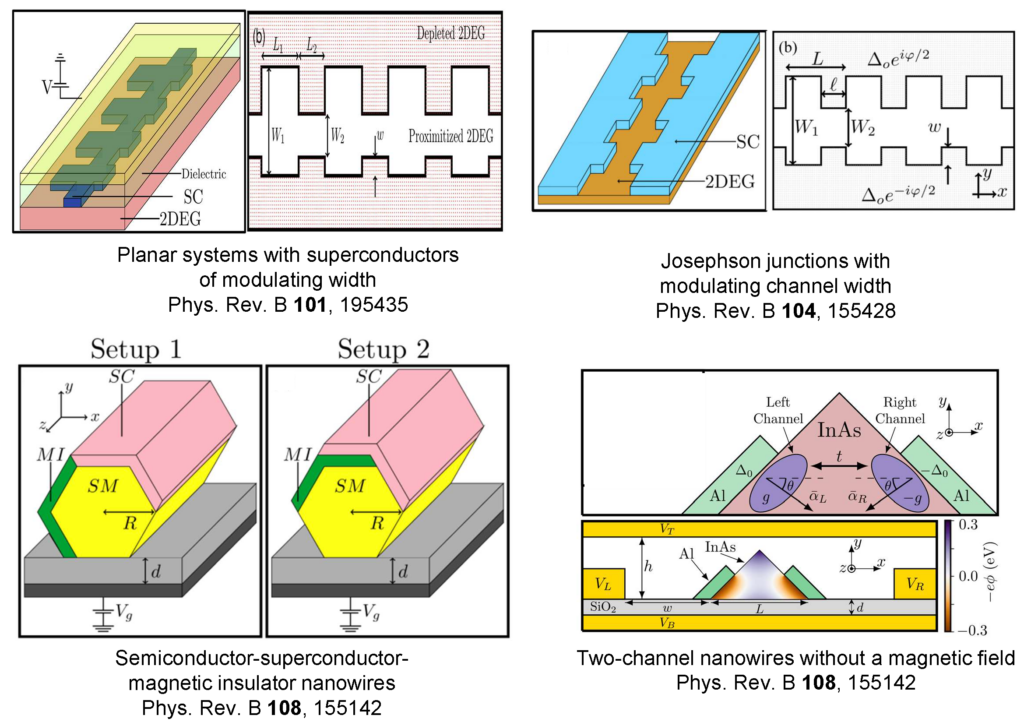Semiconductor quantum dot physics
Electrons in silicon are typically thought to have small spin-orbit coupling. Therefore, many leading spin-qubit device architectures rely on micromagnets to provide synthetic spin-orbit coupling to allow for electric control of qubits, possibly hampering the scalability of the platform. We have shown that spin-orbit coupling can be enhanced by 1 to 2 orders of magnitude within “Wiggle Wells,” by incorporating germanium concentration oscillations of an appropriate wavelength (see Phys. Rev. B 107, 035418). We’re exploring how to exploit this enhanced spin-orbit coupling for spin and qubit manipulations in Si/SiGe quantum dots in active collaboration with experimentalists. Silicon also possesses multiple degenerate conduction band minima (valleys). This provides a valley degree of freedom that competes with spin as the main degree of freedom in Si spin qubits, which can lead to failed qubits. We have shown that the Wiggle Well can also solve this issue by incorporating shear strain into the system (see arXiv:2310.18879), leading to a large deterministic valley splitting. This technique for valley splitting enhancement is also currently being explored in close collaboration with experimentalists here at UW.

Disorder effects in Majorana semiconductor-superconductor hybrids
Semiconductor-superconductor hybrids can host Majorana zero modes when driven into a topological phase by a magnetic field. These Majorana zero modes represent the building blocks of topological qubits for quantum computing, which are immune to certain errors that plague non-topological qubits. Unfortunately, disorder and device inhomogeneities can induce topologically-trivial Andreev bound states that destroy Majorana zero modes and can even mimic many of their experimental signatures. We study the quantitative characterization of disorder effects from multiple sources and their experimental signatures. Panel a shows one such important source, that being charge impurities both within the semiconducting nanowire and on its surface. Panel b shows an example of the resulting disorder potential arising from multiple charge impurities. Panel c shows the spatial profile of Majorana zero modes, which occur in a clean system, and topologically trivial Andreev bound states, which are induced by disorder.
Relevant publications: Phys. Rev. Applied 16, 054053, Phys. Rev. Materials 5, 124602, Phys. Rev. B 100, 125407, Phys. Rev. Lett. 123, 107703, SciPost Phys. 15, 005.

Novel Majorana semiconductor-superconductor devices
Conventional devices to realize topological superconductivity and Majorana zero modes in semiconductor-superconductor devices consist of a semiconductor (InAs, InSb, etc.) with strong spin-orbit coupling that is proximity coupled to a superconductor (Al, NbTiN, etc) and immersed in an external magnetic field. We study novel device designs that enhance certain properties that favor the formation of Majorana zero modes, where four examples are given in the image. For example, the periodic modulations in the top two examples can significantly enhance the spin-orbit coupling. The bottom two examples eliminate the external magnetic field by either coupling the system to a magnetic insulator (left) or using two-channel schemes (right) to realize Majorana Kramer’s pairs in the absence of a time-reversal breaking magnetic field.
New directions include the study of germanium-based systems and quantum-dot chains proximitized to superconductors.
Relevant publications: Phys. Rev. B 101, 195435, Phys. Rev. B 104, 155428, Phys. Rev. B 108, 155142
